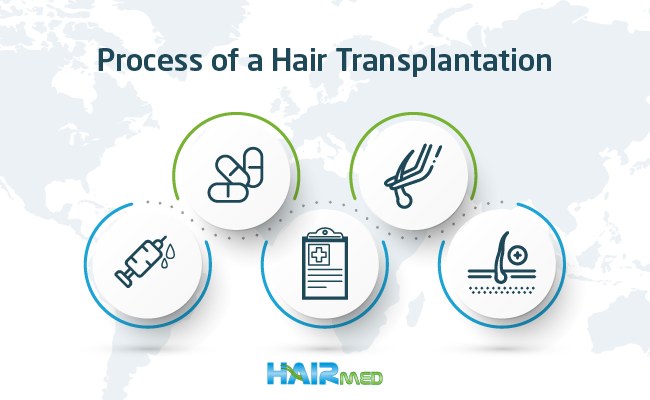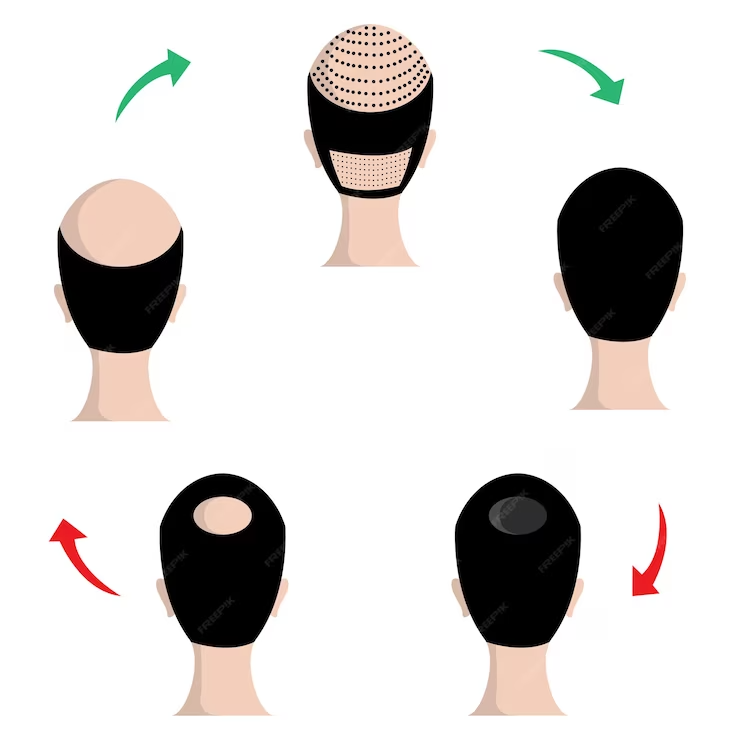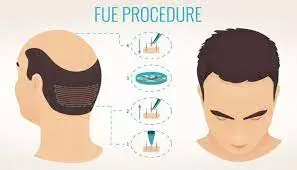Thyroid and Hair Loss: 2024 Scientific Approaches – The thyroid gland is an essential organ that regulates the body’s metabolic rate, growth, and development. Deficiency or excess of thyroid hormones can cause various health problems, including hair loss. In this article, we will discuss the effects of thyroid disorders such as hypothyroidism and hyperthyroidism on hair loss. We will also examine in detail hair transplantation methods, which are an effective solution to stop hair loss and ensure hair regrowth.
1. What is Thyroid – Thyroid and Hair Loss
The thyroid gland is a small but significant butterfly-shaped endocrine gland located in the front of the neck. The thyroid gland secretes hormones that regulate many metabolic functions in the body. These hormones are mainly T3 (triiodothyronine) and T4 (thyroxine) and control many vital functions of the body, such as energy production, temperature regulation, heart rate, digestive system functions and skin and hair health.
Functions of Thyroid Hormones:
- Rate of Metabolism: Thyroid hormones regulate the body’s energy consumption and metabolic rate.
- Growth and Development: These hormones are essential for cell growth and regeneration.
- Skin and Hair Health: Thyroid hormones regulate the growth cycle of hair follicles.
When the thyroid gland is not functioning properly, there is an imbalance in hormone production, which can lead to many health problems. Thyroid disorders such as hypothyroidism (insufficient hormone production) and hyperthyroidism (excessive hormone production) can negatively affect metabolism and the hair cycle, leading to hair loss.
2. Why does thyroid deficiency lead to hair loss? Thyroid and Hair Loss
Hypothyroidism is a condition in which the thyroid gland produces insufficient hormones and is the most common thyroid disorder causing hair loss. In hypothyroidism, the normal growth cycle of hair follicles is disrupted. The hair cycle consists of three main phases: anagen (growth phase), catagen (transition phase) and telogen (resting phase). Thyroid hormones ensure the regular functioning of these phases; however, hormone deficiency prevents hair follicles from progressing in this cycle in a healthy way.
Causes of Hair Loss in Hypothyroidism:
- Shortening of the Growth Phase: Hair follicles grow during the anagen phase, but hypothyroidism leads to a shortening of this phase and premature hair loss.
- Thinning of the hair fibres: Lack of thyroid hormones prevents sufficient nutrients and blood supply to the hair follicles, causing thinning of the hair strands. Thinning hair is more fragile and prone to loss.
- Weakening of the hair follicles: Thyroid hormones support the energy production of hair follicles. Insufficient hormone production weakens the hair follicles and causes them to fall out.
Causes of hair loss in hyperthyroidism:
Hyperthyroidism is a condition in which the thyroid gland produces excess hormones. In this disease, the hair follicles are overstimulated and this causes the hair to quickly complete the cycle and fall out.
- Dense Hair Loss: Hair follicles rapidly complete the cycle and enter the telogen phase prematurely, which accelerates hair loss.
- Hair thinning: The hair strands become thinner and the hair density decreases due to an excess of hormones.
In both cases, hair loss is caused by a disruption of the hair follicle cycle due to a deficiency or excess of thyroid hormones. When these hormone imbalances cause hair loss, normalisation of hormone levels is important to control hair loss.
3. How Can I Prevent Thyroid-Induced Hair Loss?
In order to prevent thyroid-induced hair loss, thyroid hormones must first be balanced. Hair loss cannot be controlled without normalizing hormone levels. Thyroid-induced hair loss usually improves with thyroid treatment; however, in some cases, hair loss may be permanent. Here are some strategies that can be applied to control hair loss:
3.1 Thyroid Treatment – Thyroid and Hair Loss
- Treatment of hypothyroidism: In the treatment of hypothyroidism, thyroxine hormone (T4) is supplemented to replace the missing hormones. This treatment helps to reduce hair loss and re-strengthen the hair follicles.
- Treatment of hyperthyroidism: In the treatment of hyperthyroidism, anti-thyroid drugs are used to suppress excessive thyroid hormone production. In addition, radioactive iodine treatment or surgical intervention may be required in some cases.
3.2 Diet and Lifestyle Changes to Nourish Hair Roots
It is very important to get the nutrients necessary for the hair follicles to remain healthy. The following nutrients should be considered to slow down hair loss and support hair health:
- Iodine: Required for the production of thyroid hormones. Insufficient iodine intake can lead to hypothyroidism.
- Selenium: It is an essential mineral for regulating thyroid function. Foods rich in selenium, such as Brazil nuts, should be consumed.
- Iron and Zinc: Minerals that are necessary for the strengthening of hair follicles. Insufficient iron and zinc can accelerate hair loss.
4. PRP Treatment – Thyroid and Hair Loss
PRP (Platelet Rich Plasma) treatment has become very popular recently to control thyroid-induced hair loss and strengthen hair follicles. PRP-Treatment is applied by injecting the plasma obtained from the patient’s own blood into the scalp to revitalise the hair follicles. The growth factors in its content enable the hair follicles to enter the growth phase and revitalize the weakened hair follicles.
Stages of PRP Treatment:
- Blood Collection: The patient’s own blood is drawn.
- Plasma Separation: The blood is separated by centrifugation to obtain plasma rich in growth factors.
- Injection of the Plasma: The plasma is injected into the scalp to strengthen the hair follicles.
Advantages of PRP Treatment:
- Natural and Safe: Since your blood is used, there is no risk of allergic reaction.
- Strengthens Hair Roots: PRP slows down hair loss and promotes hair growth by revitalizing hair follicles.
- Long Term Effect: Regular applications help to strengthen the hair follicles for a long time.
5. Treatment Methods That Can Prevent Hair Loss
There are many modern treatment methods that can prevent hair loss. These methods can be effective for individuals with thyroid-induced hair loss.
5.1 Mesotherapy – Thyroid and Hair Loss
Hair Mesotherapy is a treatment that involves the direct injection of vitamins, minerals, amino acids and growth factors into the hair follicles. This treatment nourishes the hair follicles and reduces hair loss. Mesotherapy can be effective in the early stages of hair loss.
Stages of Mesotherapy:
- Micro injections are made into the scalp.
- The nutrients in its content strengthen the hair follicles.
- The treatment is carried out in several sessions.
5.2 Laser Therapy – Thyroid and Hair Loss
Low Level Laser Therapy (LLLT) is a treatment method that stimulates the revitalization of hair follicles and hair growth. By increasing blood circulation in the scalp, LLLT stimulates the hair follicles and promotes hair regrowth.
Advantages of Laser Therapy:
- Painless and Side Effect Free: No pain is felt during treatment and there are no side effects.
- Area of Use: It can be used in patients with thyroid-induced hair loss.
5.3 Hair Transplantation: A Permanent Solution
Thyroid and Hair Loss: Even if thyroid-induced hair loss is under control, hair follicles may be permanently damaged in some patients. In this case, the most effective and permanent solution will be hair transplantation. Hair transplantation is the process of taking hair follicles that are resistant to hair loss from the donor area and transplanting them to the areas with hair loss.
Hair Transplantation Methods – Thyroid and Hair Loss
Thyroid and Hair Loss: Hair transplantation is the most effective treatment for patients with thyroid-related permanent hair loss. Today, there are many hair transplantation methods available and each has its advantages. Below, we will examine the most commonly used hair transplantation methods in scientific detail:
5.3.1 FUE (Follicular Unit Extraction) Method
FUE Hair transplantation method is a method in which hair follicles are extracted one by one from the donor area with the help of a micromotor. FUE is a minimally invasive technique that leaves no scars and offers natural results.
- Advantages: The healing time is fast and leaves no scars. A natural hairline can be created.
- Application Area: It can be applied in both large and small areas.
5.3.2 Sapphire FUE Method
Sapphire FUE is an advanced version of the FUE method. Using sapphire-tipped blades, the channels in which the hair follicles will be placed are opened. This method allows the hair follicles to be transplanted more frequently and naturally.
- Advantages: Sapphire blades ensure more precise and dense placement of hair follicles. Natural appearance is obtained.
5.3.3 DHI (Direct Hair Implantation) Method
The DHI (Direct Hair Implantation) method allows the hair follicles to be placed directly into the area to be transplanted with a special Choi pen. In this method, no canal opening is performed, hair follicles are directly implanted.
- Advantages: Direct transplantation is performed and more frequent transplantation is provided. It offers natural results especially in the front hairline and crown areas.
5.3.4 Hybrid Hair Transplantation
Hybrid hair transplantation combines the advantages of both FUE and DHI techniques. This method allows hair follicles to be harvested with the FUE technique and transplanted with the DHI technique.
- Advantages: Combines the advantages of both methods, achieving natural and frequent results over large areas.
Thyroid and Hair Loss — Result
Thyroid disorders are one of the important factors causing hair loss. Thyroid disorders, such as hypothyroidism and hyperthyroidism, can cause hair follicles to weaken and fall out. To stop hair loss, thyroid hormones need to be balanced. Modern methods such as PRP treatment, Mesotherapy and laser therapy can control hair loss, but the most effective solution for individuals with permanent hair loss is hair transplantation. HAIR MED Hair Transplantation Centre Turkey offers aesthetic and permanent solutions for patients with hair loss problems with its expert staff and modern technologies.









